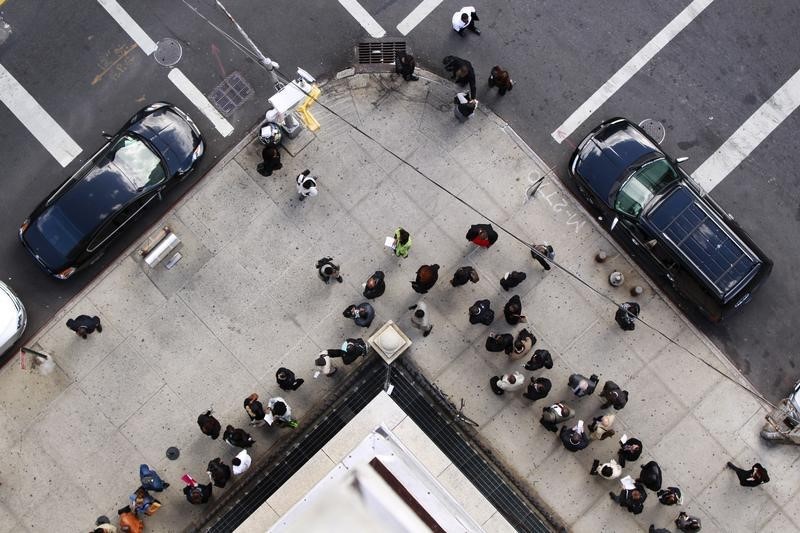Investing.com -- The U.S. economy added more jobs than projected in August, while wage gains slowed and the unemployment rate unexpectedly ticked higher, complicating the case for the Federal Reserve to keep borrowing costs on hold at its next policy meeting.
Nonfarm payrolls increased by 187,000 during the month after adding a heavily downwardly revised 157,000 in July, according to Labor Department numbers on Friday. Average hourly earnings growth moderated slightly month-on-month to 0.2% from 0.4%, and the unemployment rate in the world's largest economy accelerated to 3.8%.
The mixed jobs report muddles the emerging picture of a slowing, albeit tight, U.S. job market.
U.S. private payrolls increased by 177,000 in August, well below forecasts of 195,000. Nevertheless, other data showed that there were 1.51 job openings for every unemployed person in July. While the figure fell slightly from 1.54 in June, it remained well above the range of 1.0 to 1.2 that analysts say will mitigate inflationary pressures.
Fed policymakers are likely on the lookout for indications that a cooling in the labor market is continuing, although not to the point where it threatens broader economic activity.
Curtailing labor demand and moderating wage growth has been a major pillar of the Fed's long-standing campaign of rate hikes, with policymakers hoping that these trends may help to bring down inflation closer to their 2% objective. Despite estimates that the central bank may soon begin to back away from the cycle, it is still uncertain what the Fed will do after its gathering this month.
In any event, the Fed has said it will be "data-dependent" heading into its two-day meeting from September 19-20.
On Thursday, the personal consumption expenditures (PCE) price index, the Federal Reserve's preferred inflation measure, edged up as anticipated on an annual basis in July. Month-on-month, the PCE number held steady, pointing to a potential easing in price pressures. Meanwhile, the rate of household spending ticked higher, suggesting continued resilience in the wider economy despite the recent surge in interest rates.
Following this week's data, traders have widely stuck to their bets that the Fed will keep borrowing costs unchanged later this month. According to Investing.com's Fed Rate Monitor Tool, there is currently only a one-in-ten chance that the Fed will hike interest rates by 25 basis points at the meeting.
